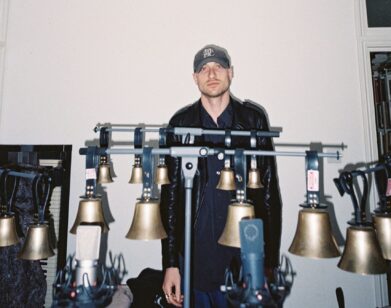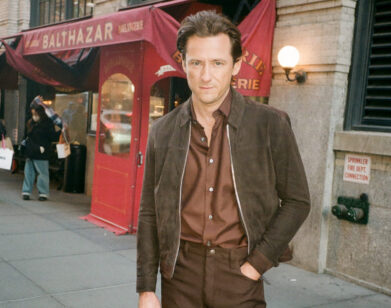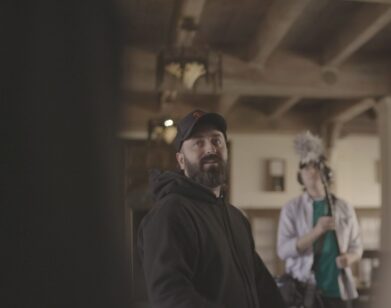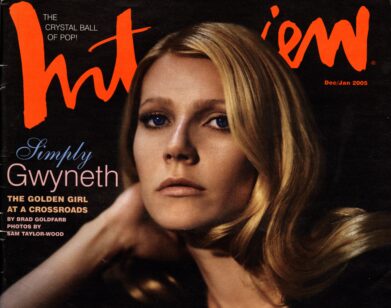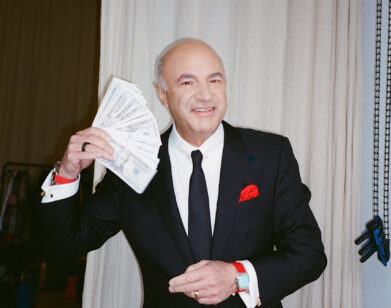Thursday Trailer Face-Off! Twixt vs. The Woman in Black

Welcome to Thursday Trailer Face-Off, a feature in which we cast a critical eye on two similar upcoming film releases, pitting them against each other across a variety of categories to determine which is most deserving of your two hours. This week: Twixt vs. The Woman in Black, two Gothic-type supernatural thrillers in which troubled men must deal with the kiddie ghosts of the neighborhoods they’re visiting.
Premise
In Twixt, Val Kilmer plays Hall Baltimore, a second-rate mystery writer who travels to a small town on the book tour for the latest in his series of novels about witches. Nobody comes to see him except an exceptionally weird dude who seems to be the town sheriff, who tells him that their town had a mass murder once and that he’s got an interesting case currently languishing in the morgue. Baltimore spends the night in the town, meets a ghost, gets some inspiration for his next book, visits a bat-house store, and gets all caught up in the real-life murder mystery. In The Woman in Black, Daniel Radcliffe plays Arthur Kipps, a lawyer who travels from London to (you guessed it!) a small town in order to settle the legal affairs of a recently deceased woman. He, too, stays overnight in the creepy place, and he, too, sees a ghost or two; the voiceover narration suggests that while the whole town is plagued by The Woman in Black, the house on the marsh—where Kipps is staying—has it worst. Frankly, we’re a little tired of frustrated novelists in horror movies—The Shining? Secret Window?—because they seem like an easy plot device, and we’re sure there will be some twist in Twixt that involves the novel Baltimore starts writing. But The Woman in Black isn’t exactly original either—it’s a remake of a 1989 film based on a novel. We’re reserving judgment on both, for now. Advantage: Tie
Cast
Val Kilmer isn’t exactly a star in demand these days. Though this might be the film that fuels his comeback, we’re honestly a lot more excited to see whether Daniel Radcliffe, in his first major starring role since the finish of the Harry Potter series, holds his own as a leading man. The Woman in Black also stars Ciarán Hinds, who’s worked with Radcliffe before (he played Aberforth Dumbledore in the last Potter movie), and who’s one of those actors you don’t realize you’ve seen in a dozen movies until you look at his filmography—high-profile projects in the last few years include There Will Be Blood, Munich, and Miami Vice. Besides the two of them, though, the cast is mostly British actors who haven’t gotten much exposure in the States. Besides Kilmer, Twixt also stars Bruce Dern, a reliably freaky actor whose career spans a half-century (he played Tom Buchanan in the Redford Great Gatsby, and let’s not even talk about his role as Bill Paxton’s dad on Big Love, you guys!). And then there’s Elle Fanning as ghost-child V (who seems to be recycling her specter makeup from Super 8), as well as Alden Ehrenreich, whom we have pegged as a major up-and-comer. Advantage: Twixt
Director
The Woman in Black was directed by James Watkins; it’s the second feature he’s directed, after the 2008 thriller Eden Lake, and he’s written three more: Gone, My Little Eye, and The Descent: Part 2. So it seems like he’s pretty well-qualified to handle the material. But Twixt was directed by Francis Ford Coppola, five-time Oscar-winning Francis Ford Coppola, who can be forgiven for the occasional Jack on the strength of, you know, The Godfather and Apocalypse Now and, for that matter, the creation of Sofia. Advantage: Twixt
Environs
Since both of these movies hinge on newcomers staying overnight in eerie small towns, it’s worth discussing which eerie small town is, in fact, eerier. We’d say they’re about evenly matched on the foreboding, misty woods front (compare 1:01 in The Woman in Black to 1:44 or so in Twixt). And there’s definitely something very shiver-inducing about the establishing shots of the small town in Twixt—the deserted main drag, the “Keep Out!” sign—as well as the completely generic motel room Baltimore ends up staying in. It all works because it’s 99 percent familiar and one percent off. But when it comes to surefire scariness, the shambling old mansion in The Woman in Black takes the cake. It’s isolated (see 0:46), it’s weathered and gray (0:28), it used to be luxurious (0:51), it has dark, narrow, Gothic passageways (0:29), and, oh yeah, it’s full of old dolls and Capuchin monkey toys that still play their instruments (throughout). None of this stuff is particularly original—we watched Jane Eyre on the edges of our seats earlier this year for a lot of the same reasons—but it’s still completely effective. Advantage: The Woman in Black
Creepy Children
There’s exactly one moment in the Twixt trailer where we’re a little scared of Elle Fanning: for a split second at 3:12, she bares her teeth (revealing braces, actually, it looks like). And there’s the indication that there are lots of other children who come into play, too: at 1:01, they’re all arranged in a circle for easy access by the serial killer, and at 2:55, they all bound out of a window. But she mostly seems like a friendly little woodland sprite, all floaty dresses and tiny decorative braids; this could just be an atmosphere video for a Gothic-inspired Rodarte line. The kids in The Woman in Black are much scarier—all pinafored and turning their heads in unison at 0:34; looking passively through windows and gates at Kipps as he arrives into town; doing more freaky unison-walking at 1:02; standing in the rain like a battalion at 1:10. And let’s not forget about those toys: whatever kid played with those is bound to be some kind of weirdo monster. Plus, the plot summary of the film informs us that Kipps, too, has a child, which we’re sure will come to be important in one way or another. Advantage: The Woman in Black
Music
We weren’t planning to include this category, because The Woman in Black‘s is nothing special; its music editor is Tony Lewis, who’s worked on four solid films or so each year since 1998, among them The Hours, The Queen, and The Constant Gardener. But we needed someplace to mention that Coppola hired Dan Deacon to produce original music for Twixt. Dan… Deacon. Dan Deacon, of the Baltimore experimental electronic scene. We’re so intrigued! We have to say that this selection on Coppola’s part makes us think maybe Twixt is a whole lot weirder than its trailer suggests. Advantage: Twixt
The Verdict
By a nose, Twixt wins it. There’s a lot about this movie that looks a little slipshod, to be honest—as Vulture points out, the trailer is “unfortunately cheap and digital-looking”—and the trailer doesn’t seem to deserve its unusually long run-time (it’s nearly twice as long as most). But there’s just something about it that also seems extremely original, surreal, and memorable. By contrast, The Woman in Black looks like a completely serviceable period thriller, totally worth $14 and two hours—but not the kind of movie that stays with you. We have higher hopes for Twixt—and will be much more disappointed if it doesn’t live up to them. The Winner: Twixt

